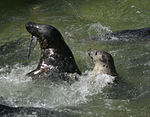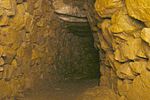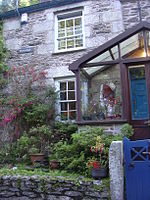Merthen Manor
Buildings and structures in CornwallCountry houses in CornwallGrade II* listed buildings in CornwallGrade II* listed housesHouses completed in 1575 ... and 4 more
Manors in CornwallNational Heritage List for EnglandNature Conservation Review sitesSites of Special Scientific Interest in Cornwall

Merthen Manor (Cornish: Merdhin, meaning sea fort) is a 16th-century manor house in west Cornwall, England, UK. For most of its history it has been in the ownership of the prominent Cornish family, the Vyvyan family. The house is set in over 100 acres (40 ha) of woodland which, along with the shoreline of the Helford River, is designated as Merthen Woods Site of Special Scientific Interest (SSSI).
Excerpt from the Wikipedia article Merthen Manor (License: CC BY-SA 3.0, Authors, Images).Merthen Manor
Bonallack Lane,
Geographical coordinates (GPS) Address Nearby Places Show on map
Geographical coordinates (GPS)
| Latitude | Longitude |
|---|---|
| N 50.0937 ° | E -5.1791 ° |
Address
Bonallack Lane
TR12 6UJ , Constantine
England, United Kingdom
Open on Google Maps









